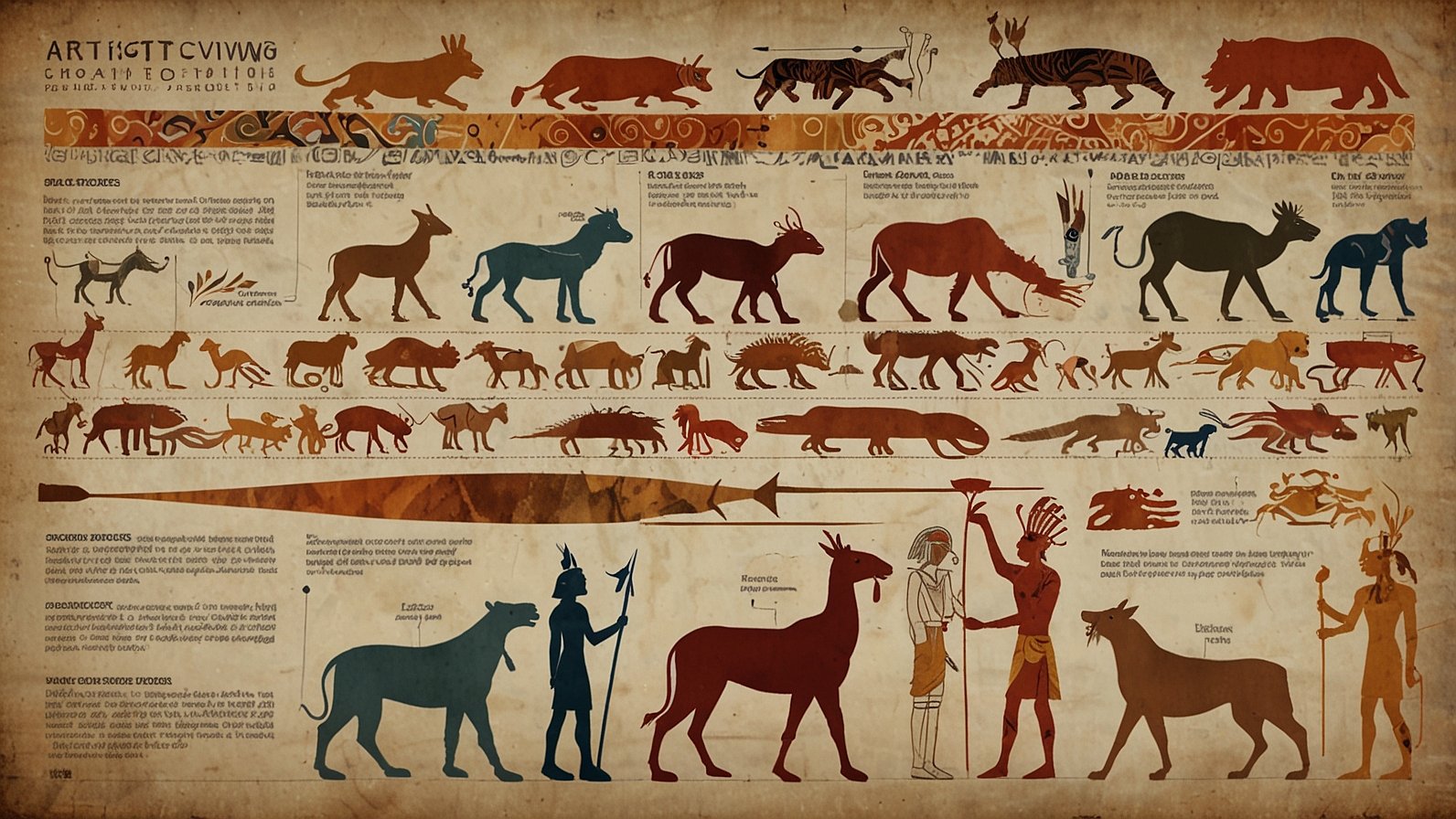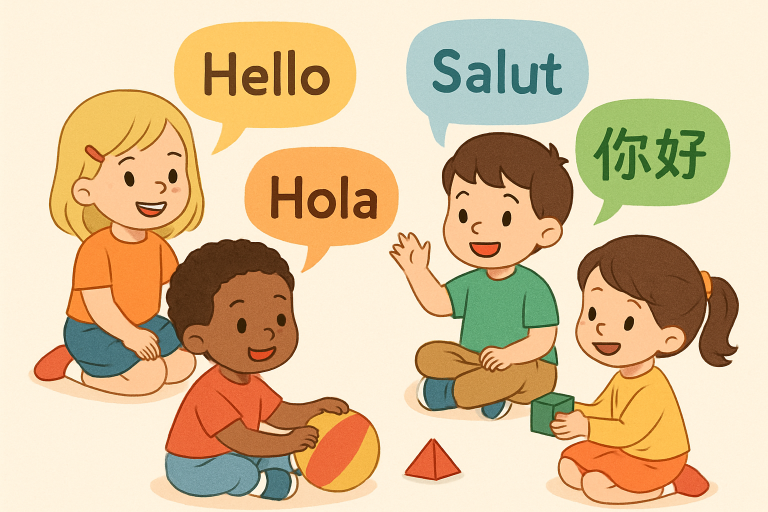It’s a strange and wonderful feeling. You’re looking at a statue carved 2,000 years ago or a pot painted by someone 5,000 years in the past, and yet, you can sense their humanity, their struggles, and their joys. The oldest known figurative sculpture, the Venus of Hohle Fels, is over 40,000 years old. That means someone, in a world we can barely imagine, felt the urge to create something beautiful. This universal, timeless drive to express ourselves is what we celebrate at Ancient Artz. We believe these aren’t just relics in a museum; they are conversations waiting to be had, and they have incredible power to inspire our modern lives.
What Exactly is Ancient Artz?
Think of us as your friendly guide to the art of the ancient world. We’re not a dusty, intimidating textbook. We’re a vibrant brand built on three core pillars:
- Education: We break down the stories, techniques, and cultural contexts behind ancient art in a way that’s engaging and easy to understand. No PhD required!
- Appreciation: We help you see the incredible skill and creativity of ancient artisans, from the Egyptians to the Greeks, from the Maya to the Chinese Han Dynasty.
- Inspiration: We connect the dots, showing how a Mesopotamian pattern influences a modern rug or how a Greek philosophical concept is echoed in today’s architecture.
At its heart, Ancient Artz is about making this vast, beautiful heritage accessible and relevant to everyone. It’s about understanding our shared human story, one masterpiece at a time.
Why Bother with Art Made Thousands of Years Ago?
It’s a fair question. We live in a fast-paced, digital world. Why look back? The answer is simple: ancient art is the foundation of everything we see today. It’s our cultural DNA.
- It’s a Window into the Human Mind: These artworks are the closest thing we have to a time machine. A cave painting in Lascaux tells us about the animals our ancestors feared and revered. A Roman bust reveals ideals of beauty and power. It’s the original social media feed, documenting humanity’s earliest thoughts and values.
- It Teaches Unmatched Craftsmanship: Before power tools and mass production, everything was made by hand. The precision of Egyptian lapis lazuli inlay, the lost-wax casting of a Benin bronze, the intricate weaving of Peruvian textiles—these techniques were mastered through a lifetime of dedication. Studying them teaches us about patience, skill, and quality that lasts.
- It’s a Wellspring of Modern Inspiration: Look around you. That geometric pattern on your wallpaper? It likely has roots in Greek meanders or Native American motifs. The sleek lines of a modern sculpture? They echo the simplified forms of Cycladic figurines. Designers at companies like West Elm or Patagonia often draw directly from these ancient wells of creativity.
Engaging with ancient art doesn’t mean living in the past. It means arming yourself with the deepest and most tested ideas in human history to create a more thoughtful future.
How Ancient Artz Brings the Past to Your Present
We don’t just want to tell you about ancient art; we want you to experience it. We’ve built our brand to be interactive and tangible.
For the Curious Mind: Our Learning Hub
Our online articles, videos, and virtual workshops are designed for the lifelong learner. We explain why the Greek contrapposto stance was revolutionary (it made statues breathe!) or how Egyptian faience glass was made. We answer the questions you actually have.
For Your Home: Culturally-Inspired Pieces
Through collaborations with skilled artisans, we offer a curated collection of reproduction vessels, sculptural studies, and prints. These aren’t cheap knock-offs. They are thoughtful pieces created with respect for the original techniques and cultural significance, allowing you to live with a fragment of history.
For the Community: Connecting People
From online forums to museum tour partnerships, we foster a community where enthusiasts, experts, and newbies can share their passion and discoveries.
The Silent Crisis: Why Preservation Matters More Than Ever
Here’s the hard truth: our shared heritage is fragile. Time, pollution, climate change, and conflict constantly threaten these irreplaceable treasures. The bombing of the Buddhas of Bamiyan and the damage to Palmyra were devastating cultural losses.
So, what can we do? Awareness is the first step. By learning about and valuing these works, we create a global community that advocates for their protection. Organizations like the World Monuments Fund do incredible work, and supporting them, even through awareness, matters. When you understand the story behind a monument, you’re far more likely to care about its survival. Ancient Artz aims to be a megaphone for these preservation efforts, turning readers into advocates.
We See It Everywhere: Ancient Art in Your Daily Life
You might be surprised how often you encounter the echo of ancient art.
- That logo on your car? The Mercedes-Benz symbol isn’t just a fancy star; it’s derived from a ancient symbol of the goddess Venus.
- Your favorite superhero movie? The epic tales of gods and heroes in Marvel and DC films are directly pulled from Greek, Norse, and other mythologies—the stories ancient art illustrates.
- The jewelry you wear? Techniques like granulation (using tiny metal beads) were perfected by Etruscan goldsmiths thousands of years ago and are still used by high-end jewelers today.
Once you start looking, you’ll see the fingerprints of ancient artisans everywhere in our modern world.
Your Journey into the Ancient World Starts Now
You don’t need a plane ticket to begin exploring. Here are five simple ways to bring the wisdom and wonder of ancient art into your life today:
- Follow a Museum on Social Media: The Met, the British Museum, and the Louvre offer stunning virtual tours and deep dives into their collections for free.
- Read One Article a Week: Pick a civilization that intrigues you and dive in. What was their art like? What did they value?
- Choose Decor with a Story: Next time you buy a poster or a vase, look for one inspired by an ancient pattern or form. It’s a great conversation starter!
- Watch a Documentary: Series like BBC’s “Civilisations” or Netflix’s “Secrets of the Tomb” make for breathtaking and informative viewing.
- Just Look Closer: Notice the architectural details on old buildings in your city—you’ll often spot Greek columns, Roman arches, or Gothic motifs.
The world of ancient art is vast and endlessly fascinating. We’d love to hear what draws you in. What’s the piece of ancient art that most captivates you? Share your experiences with our community and let us know what you’d like to learn about next!
You May Also Read: Test AI Like a Pro: 7 Unexpected Pitfalls (And How to Avoid Them)
FAQs
Q: Is buying reproductions of ancient art ethical?
A: This is a great and important question. Ethics are central to our mission at Ancient Artz. We deal only in legally and ethically sourced reproductions and studies, clearly marketed as such. We never deal in authentic artifacts, as the trade in genuine antiquities often fuels looting and the destruction of archaeological sites. Our pieces are meant to inspire appreciation, not mimic the illegal market.
Q: I’m a complete beginner. Where should I start?
A: Welcome! A fantastic place to start is with the art of Ancient Egypt or Classical Greece. Their stories are well-documented, and their styles are very distinct and influential. Our “Beginner’s Guide” series on the website is built specifically for you.
Q: How can I tell if something is a reproduction vs. a genuine antique?
A: Genuine antiquities are rare, expensive, and almost always come with extensive provenance (a documented history of ownership). They are typically sold by major auction houses. If a price seems too good to be true for an “ancient” piece, it almost certainly is. Reputable sellers will always clearly state that an item is a reproduction, tribute, or study.
Q: Does Ancient Artz offer resources for teachers or parents?
A: Absolutely! We are developing lesson plans and activity kits designed to make ancient art engaging for different age groups. Getting kids interested in history through art is a powerful way to learn.
Q: How did ancient artists make paints and materials without modern technology?
A: Their ingenuity was incredible! They used what was available in nature: grinding minerals like malachite for green, azurite for blue, and ochre clay for reds and yellows. They used egg yolks, wax, or plant gums as binders to make the paint stick. This is why the colors often have such a unique, earthy depth.
Q: Can I visit a physical Ancient Artz location?
A: Currently, Ancient Artz is primarily an online educational and retail resource, allowing us to reach a global audience. However, we frequently pop up at cultural festivals, museum events, and host workshops in various cities.










